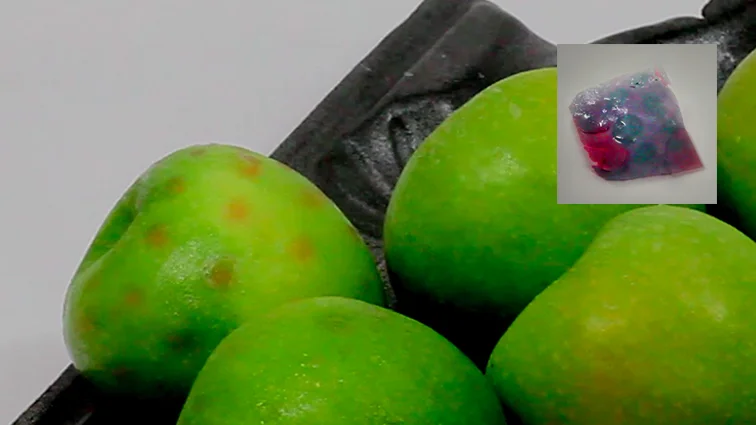Organic Primitives Intelligent Bioplastics
A large portion of the chemical and biological processes underlying our everyday experience remains imperceptible to us. Be it the contents of rain, the ocean, or human tears, chemical codes mediate interactions between organic systems from the environment to our bodies and food.
As humans, we understand information mediated by our senses—through textures, symbols, odors, and tastes. In order to design for a wider array of sensory modalities in representing fluid-based information and enable user interaction with these systems, we have developed Organic Primitives. It is a new medium for transforming objects into information displays. Chemical input is converted into human senses through a set of color, odor, and form changing materials - coined Material Primitives.
Transforming Objects into Information Displays
A variety of prototypes was built to demonstrate how objects can sense contents in fluids and change color, odor, and form to communicate with users. Among the examples: an umbrella that bleeds in the presence of acid rain, communicating that the rainwater from the sky is damaging it; an apple that tells you it's been contaminated during transport, by producing red spots to communicate its toxicity; a compostable fork that refuses to pick up your food when you've eaten too much, by wilting in form after a duration of time; shape programmable pasta that curls into new shapes when you introduce different sauces; and a shirt that refreshes new designs when you apply a new perfume. These interactive objects were constructed by integrating color, odor, and form changing material primitives with a design language and semiotics to communicate a variety of context-specific messages.
Interactive objects integrated with Organic Primitives utilizes semiotic signs of toxic mushrooms, blood, water mist, and wilted flower to communicate messages of toxicity, pain, refreshment, and error.
Color, Odor, And Shape Changing Biomaterials
Through a design methodology, we call Molecular Design Interactions, this research demonstrates how molecular-scale phenomena can be brought to application and user interaction with chemical and biological systems for environmental sensing, food interaction, and sustainable design. Currently, the material primitives are driven by pH signals in fluids to develop a range of displays catered to the perceptual spheres of humans (color, texture, odor). In this research, pH is utilized as a model chemical input with broad applicability for interacting with a range of natural systems with the body, food, and climate. Future work will expand upon the library of chemical sensing capabilities.
The material primitives were processed by doping food-grade biopolymers with organic compounds to produce stimuli-responsive biopolymer materials with color, odor, and shape-changing properties. The material primitives can be combined and are able to output a spectrum of colors and different degrees of shape deformation, and they can switch from odorous to non-odorous states.
By unveiling the chemical world around us through these subtle, overlooked everyday interactions with our food, environment, and bodies, we aspire to instill a sense of wonder and agency in the protection of these organic systems.
The research were a result of research investigation beginning in 2014 and was published in Association for Computing Machinery SIGCHI. It was granted a Best Paper Award at the CHI 2017 conference. CHI is considered to be the most prestigious publication venue in the field of Human-Computer Interaction and is among the top-ranked in computer science, with an acceptance rate of 23 percent. Our best paper award signifies that it was ranked in the top one percent of all submissions in the SIGCHI 2017 conference, where 24 were chosen out of more than 2400 submissions.
Team: Virj Kan, Emma Vargo, Noa Machover, Serena Pan, Yasuaki Kakehi



